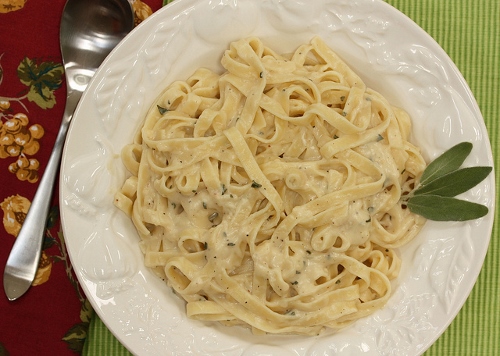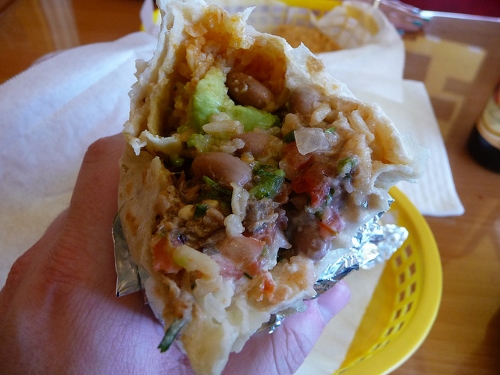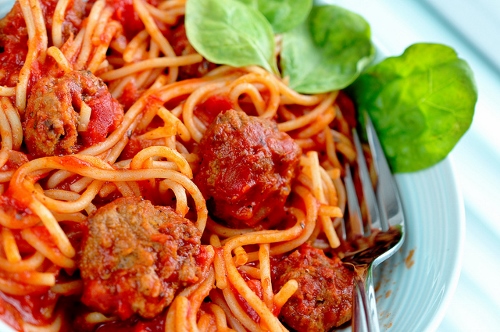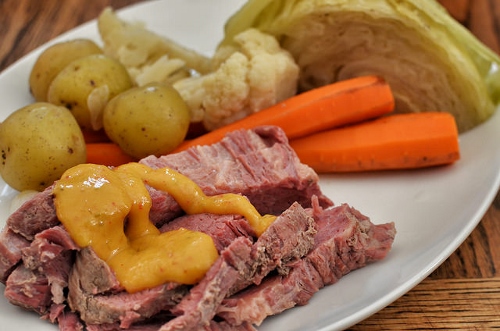As the classic patriotic tune goes, “I’m proud to be an American, where at least I know I’m free (to eat whatever the hell I want).” That’s the assumed subtext, at least. Food is such a huge part of American culture, largely because we have limitless deliciousness at our disposable at all times. And when we indulge in such decadence, we’re openly proud of it (see: Instagram).
The freedom to choose what we want to chew and the pride for whatever we decide on often correlate with this country’s ubiquity of ethnically diverse cuisine. In metropolitan areas, you can stroll down the street and have your pick between dining on Indian, Thai, Polish, you name it. Even small towns are often gifted with the likes of Chinese eateries and Mexican restaurants.
However, misconception is often a key ingredient in many of the ethnic foods found in the United States. So, before celebrating the sophistication of your worldly palate, here are five beloved “ethnic” foods that are totally, authentically American in spirit. Don’t let the backstories of these dishes ruin your enjoyment of them, though. If anything, they’re shining examples of the American ideals of adaptability, entrepreneurship, and myth-making.
General Tso’s Chicken
“Who exactly is General Tso, and at what point in his time in the Chinese military did he create such a tasty chicken dish?” is something you might have asked yourself while digging into this Chinese takeout fan favorite. It’s no secret that the white-carton-contained cuisine delivered to your door is often referred to as “American Chinese food.” However, it seems safe to assume it’s usually a close adaptation of authentic Chinese food, right?
Despite being considered a Hunanese dish typically, General Tso’s chicken is not found in the Hunan capital, Changsha, nor the city of Xiangyin, which was the home of General Tso. For her book The Fortune Cookie Chronicles: Adventures in the World of Chinese Food, author Jennifer Lee even interviewed descendants of Zuo Zongtang, the 1800s Qing Dynasty general now referred to as General Tso; as it turns out, though, none of them had heard of the ever-popular menu item. Though the exact geography of the dish’s introduction is disputed, it seems to have been in New York City either way. Chef Peng Chang, who studied under the famous Chinese chef Cao Jingchen, first served the dish as a house specialty at his NYC restaurant in the ‘70s. However, NYC’s Shun Lee Palaces claims that their chef, T.T. Wang, beat Peng to the punch by creating the dish in 1972. Either way, the crispy, spicy dish was born on American soil.
Alfredo Sauce

Flickr/Meal Makeover Moms
Surely, a sauce that shares a name with a character in the classic Italian film Cinema Paradiso must be Italian. When it comes to food, though, names often don’t mean much. In this particular case, the sauce is named after a guy who didn’t even really invent it.
In 1914, Alfredo Di Lelio whipped up a sauce consisting of parmesan cheese and butter to top off the fettucine he was serving his pregnant wife. After opening a restaurant in Italy where that very dish gained great popularity among locals and visiting Americans alike, Di Lelio eventually moved to New York City and opened another restaurant. From there, the sauce eventually became a staple in Italian-American cuisine, although the modified version that ended up being the widespread standard usually features additional ingredients like cream, eggs, and starches. Since cream is hardly ever used to make sauces in Italy and the European name for Di Lelio’s dish is Pasta al Burro (“pasta with butter”), Alfredo sauce as we know it today really only traces back to America.
Mission-Style Burritos

Flickr/Ross Bruniges
Taking a whole bunch of ingredients and rolling them up for face-stuffing convenience does kinda have “American” written all over it. In Mexico, a burrito generally doesn’t contain much more than meat and beans enveloped in a tortilla. In the United States, a burrito also contains those ingredients, plus, ya know, like 12 other things.
Most American diners recognize that the Mexican food we typically eat is Americanized to an extent. Though, in the case of these giant burritos that you can find practically anywhere now, the “Tex-Mex” moniker isn’t even really correct. The ensemble cast of ingredients rolled in a tortilla like a sleeping bag for your inevitable food coma first came about in the San Francisco’s Mission District in the 1960s. Distinguishing itself from the traditional burritos of Mexico, this monster includes the additions of rice, vegetables, cheeses, sour cream, and seemingly whatever else can fit in there. It’s Mexican-inspired, but really California-created.
Spaghetti and Meatballs

Flickr/Dave Crosby
As it turns out, the stock photo subject for Italian cuisine is something that came about in the United States. This one is slightly tricky because while spaghetti comes from Italy and meatballs also come from Italy, the combination of the two does not.
Meatballs, as we now refer to them, were first made by resourceful peasants in Italy who scrounged together scraps of meat and combined them into a more filling food. In Italy, however, meatballs—or pollette—were not served with pasta. It wasn’t until Italian immigrants began coming to America in large numbers that meatballs became integrated into spaghetti dishes, thus making the immensely popular, seemingly perfect pairing an American-made meal. It’s just a case of citizenship, really (cue the culinary conservatives demanding to see a birth certificate).
Corned Beef and Cabbage

Flickr/jeffreyw
Apologies if this one made you do a spit-take while sipping a Guinness. While corned beef does have a long history of regular consumption in Ireland, the meal we associate with St. Patrick’s Day in such celebratory fashion is not one the Irish have any real attachment to. The dish that is more accurately considered to be Ireland’s national dish is colcannon, which consists of boiled potatoes, white cabbage, leeks or onions with added butter, milk and wild garlic. Well, we got the cabbage part right at least. Still, that shouldn’t stop non-Irish-Americans on St. Patrick’s Day from sitting down to a plate of corned beef and cabbage between rounds of day drinking and running around dressed as a leprechaun. Hey, traditions are traditions.
Trevor Courneen is an intern at Paste and a proud Rochesterian. He will gladly join you for a Garbage Plate anytime. You can follow him on Twitter @trevorcourneen.